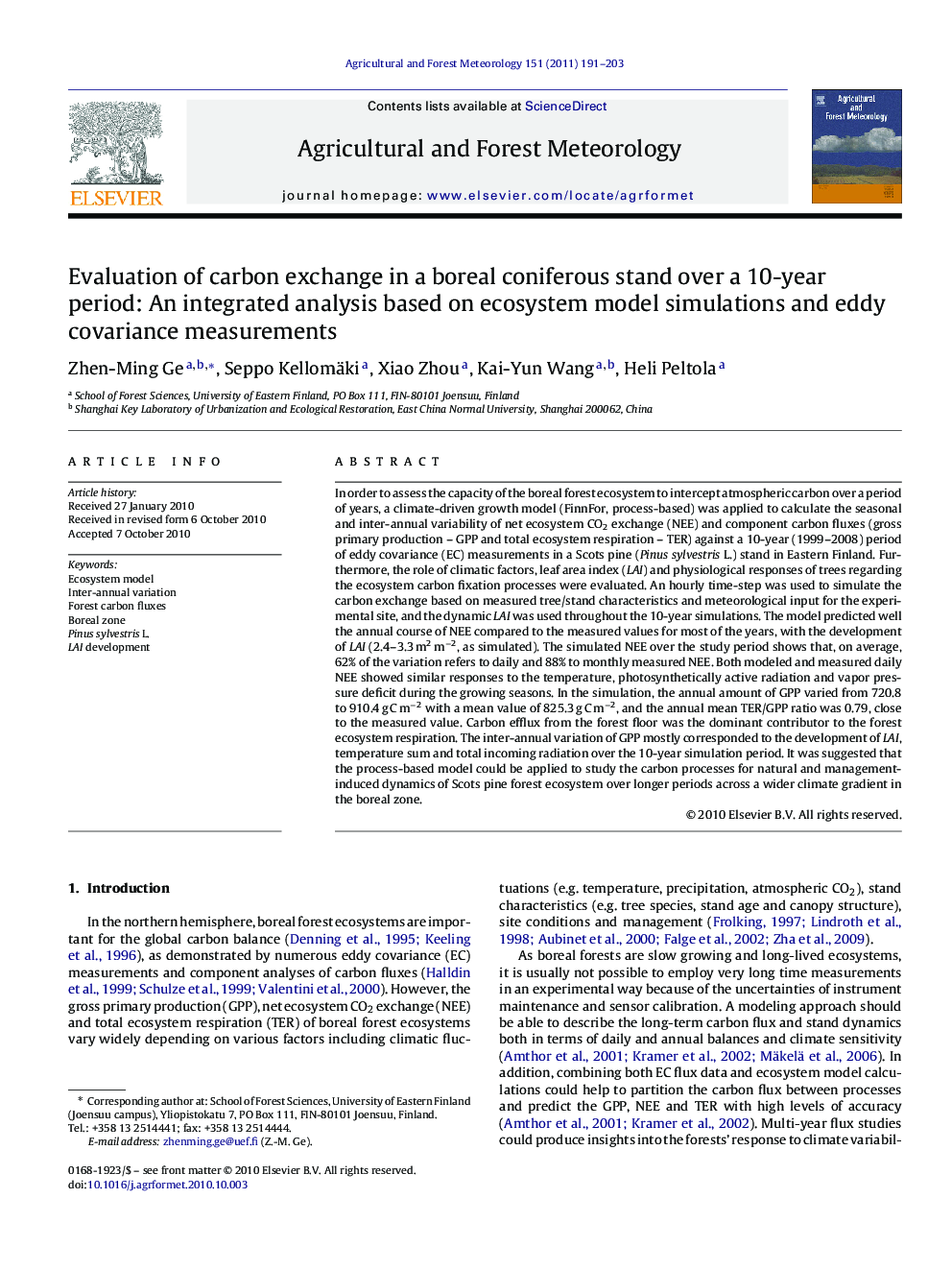| کد مقاله | کد نشریه | سال انتشار | مقاله انگلیسی | نسخه تمام متن |
|---|---|---|---|---|
| 82375 | 158393 | 2011 | 13 صفحه PDF | دانلود رایگان |

In order to assess the capacity of the boreal forest ecosystem to intercept atmospheric carbon over a period of years, a climate-driven growth model (FinnFor, process-based) was applied to calculate the seasonal and inter-annual variability of net ecosystem CO2 exchange (NEE) and component carbon fluxes (gross primary production – GPP and total ecosystem respiration – TER) against a 10-year (1999–2008) period of eddy covariance (EC) measurements in a Scots pine (Pinus sylvestris L.) stand in Eastern Finland. Furthermore, the role of climatic factors, leaf area index (LAI) and physiological responses of trees regarding the ecosystem carbon fixation processes were evaluated. An hourly time-step was used to simulate the carbon exchange based on measured tree/stand characteristics and meteorological input for the experimental site, and the dynamic LAI was used throughout the 10-year simulations. The model predicted well the annual course of NEE compared to the measured values for most of the years, with the development of LAI (2.4–3.3 m2 m−2, as simulated). The simulated NEE over the study period shows that, on average, 62% of the variation refers to daily and 88% to monthly measured NEE. Both modeled and measured daily NEE showed similar responses to the temperature, photosynthetically active radiation and vapor pressure deficit during the growing seasons. In the simulation, the annual amount of GPP varied from 720.8 to 910.4 g C m−2 with a mean value of 825.3 g C m−2, and the annual mean TER/GPP ratio was 0.79, close to the measured value. Carbon efflux from the forest floor was the dominant contributor to the forest ecosystem respiration. The inter-annual variation of GPP mostly corresponded to the development of LAI, temperature sum and total incoming radiation over the 10-year simulation period. It was suggested that the process-based model could be applied to study the carbon processes for natural and management-induced dynamics of Scots pine forest ecosystem over longer periods across a wider climate gradient in the boreal zone.
Research highlights▶ A process-based model was applied to calculate the component carbon fluxes of a boreal forest during a ten-year (1999–2008) growth period. ▶ It was hypothesized that the model, including multi-source parameterizations using laboratory experiments and field measurements, with the forest growth guidelines concerning leaf area index development, can be used to calculate the seasonal and inter-annual variability of carbon balance with stand age. ▶ This study evaluated the respective roles of climatic factors, canopy development and physiological responses of trees for the ecosystem carbon processes. ▶ The practicality of the model utilization for long-term stand carbon processes with natural and management-induced dynamics of forest ecosystem to broader regions, was discussed.
Journal: Agricultural and Forest Meteorology - Volume 151, Issue 2, 15 February 2011, Pages 191–203